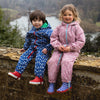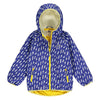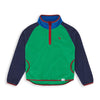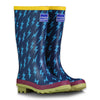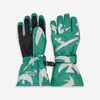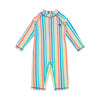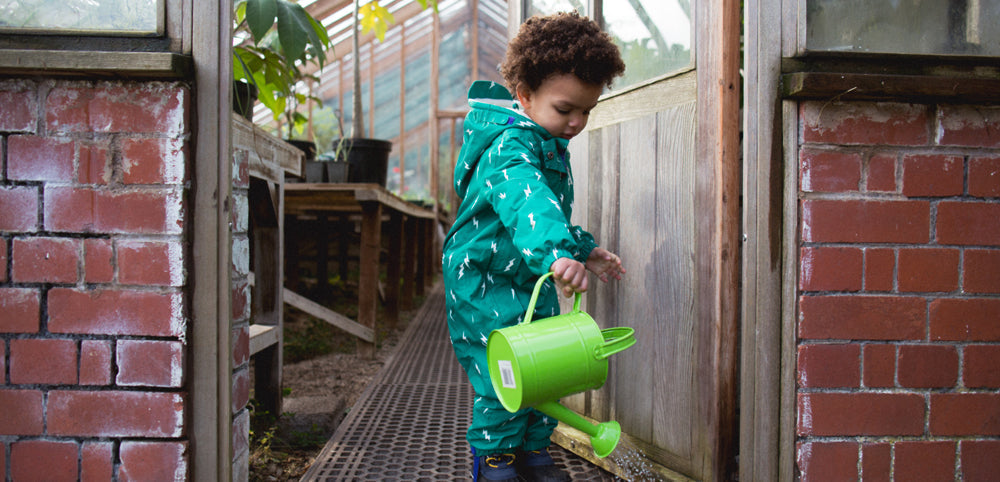
5 Simple Outdoor Learning Ideas for Families
Discover the joy of learning outdoors – no screens, no fuss, just nature, curiosity and a splash (or two) of mud!
The Muddy Puddle Teacher, Sarah Seaman, has put together some outdoor learning ideas for families, in celebration of her new book, The Muddy Puddle KS1 Teacher - a brilliant resource for KS1 teachers and outdoor learning enthusiasts.

🌱 Why Take Learning Outside?
When we step outside our front door, the world instantly becomes a classroom. With fresh air, natural materials and the simplest of walks, we can create rich, meaningful learning adventures. These experiences are just as valuable as classroom lessons – for all children, from babies to teens – and just as powerful for us grown-ups too. As a teacher and mum of two neurodivergent children, here’s why this matters so much for families:
- Nature invites curiosity. Branches, pebbles, puddles and rustling leaves become prompts for exploration.
- Outdoor movement boosts wellbeing. It reduces screen time, calms behaviour, supports self-regulation and encourages creative play (hello, happy hormones!).
- Natural and upcycled materials inspire imagination. They show children that learning doesn’t need fancy equipment – and remind us all to live joyfully with what we already have.
With this in mind, here are five simple, muddy and magical outdoor learning ideas inspired by The Muddy Puddle Teacher approach – designed to get the whole family outside, moving and learning together.
Before You Head Outside…
Here’s one BIG muddy tip – learned the hard way after years of parenting and auntie-duty!
Never say “We’re going on a walk.”
That single word often sparks groans and eye-rolls. Instead, say “Let’s go on an adventure!” or “Explore time!” and tell them exactly what they’ll be doing. Give them something to hold – a bag, a stick, a list – so they know there’s a task ahead.
Remember, we’re competing with screens, so change the vocabulary and you’ll change the mindset.

1) Nature Treasure Hunt: Upcycled Bag & Natural Finds
You’ll need:
- An old tote bag or pillowcase (upcycled)
- A list of treasures to collect
Nature Treasure Hunt List:
- A smooth stone
- A fallen leaf with holes
- A twig shaped like the letter of your name
- A brown leaf with torn edges
- A twig that looks like Stick Man
- Moss that looks like a cloud
- A feather of any colour
- Something that sparkles in the sunlight
- A seed or pinecone
- A leaf smaller than your little finger
- A stone with a stripe or spot on it
- A blade of grass taller than your thumb
- Something soft and green
- Bark that feels bumpy or rough
- A tiny flower or fallen petal
- Something that smells earthy or fresh
- A sound from nature (birdsong, buzzing, wind)
- A stick longer than your hand
- A leaf that’s a colour other than green
- Something shaped like a heart, star or circle
How to do it:
- Set the challenge and start exploring. With mini-muddies, collect together; with older ones, divide up the list for teamwork.
- Talk as you walk: “Why is that leaf full of holes?”, “what makes that stone smooth?”
- Afterwards, sort your finds by type or colour. Could you turn them into a sculpture, collage, or even a tiny bug hotel?
Why it works:
- Develops observation, sorting and sensory skills.
- Reinforces sustainability through upcycling.
- Encourages movement, conversation and family connection outdoors.
2) Muddy Maths: Measuring Puddles
You'll need:
- A stick or small branch (find one as you go)
- A piece of string
How to do it:
- Find a puddle and measure how deep it is using your stick. Then, with string, measure around the puddle (circumference) and across (diameter).
- Compare the results – which puddle is deepest? Widest?
- Try it again on different weather days – call it your Puddle Experiment! Keep notes in a “Little Scientist” folder and even name your puddles – Mr Pots the Puddle, anyone?
Why it works:
- Encourages early maths and scientific thinking.
- Connects learning to real-world experiences.
- Embraces mud, mess and movement – the Muddy Puddle Teacher way!
3) Upcycled Art: Muddy Scene Settings
You'll need:
- A cardboard box
- Your child's favourite storybook
How to do it:
- Take the book with you and collect items to create a scene from the story. For We’re Going on a Bear Hunt, for example, gather wavy grass, muddy soil, and stones for the snowstorm. Look for sticks shaped like people or moss that could become the bear!
- If your child is non-verbal, keep chatting and involve them through touch and choice.
- Once home, create your scene in the box. Don’t worry if you don’t finish right away – the goal is outdoor fun, not perfection.
- Older children might even animate their story using a simple app!
Why it works:
- Combines creativity, language and fine-motor skills.
- Reuses everyday materials.
- Promotes storytelling and reflection after outdoor play.
4) Bug and Mini-Beast Safari
You'll need:
- A magnifying glass (optional)
- A clipboard or piece of card and paper
- A clear pot lid or small recycled container
How to do it:
- Look under leaves, bark and stones to discover mini-beasts.
- Record what you find: “Snail – 1”, “Woodlouse – 2”, “Ant – 5”.
- Afterwards, tally up your findings: Which creature did you spot the most? The least? Discuss what you noticed and release all creatures gently back to nature.
Why it works:
- Builds scientific observation and curiosity.
- Encourages respect for living things.
- Uses real environments for hands-on discovery.
5) Weather and Season Detective: Leaf Wreath
You'll need:
- String
- Scissors
How to do it:
- Leaf wreaths can be made in any season. Collect leaves, petals and grass, noticing what the environment tells you about the time of year: “Frost on the grass – Winter”, “fresh buds – Spring”, “leaves on the ground – Autumn.”
- Thread your finds onto string by snipping small holes or tying stems together.
- Display your wreath indoors or outside.
Why it works:
- Encourages awareness of seasonal change.
- Develops creativity, focus and fine-motor control.
- Strengthens emotional connection to the natural world – if children love it, they’ll protect it.
Muddy Tips for Outdoor Success
- Dress for the weather. (Muddy Puddles gear helps!)
- Keep it flexible. Even 10 minutes outside can boost wellbeing.
- Celebrate discoveries. A simple “Good spot!” goes a long way.
- Always give them something to hold – a prop keeps focus.
- Reflect afterwards. Chat about what you found and plan your next adventure.
- For non-verbal children: Take photos, print them and keep talking about what you did. Impact isn’t always instant – stick with it.
Final Thought
You don’t need gadgets or expensive kits to learn outdoors – just a little imagination and the willingness to get muddy! The more we make learning hands-on and heart-led, the more our children thrive.
So grab your wellies, your upcycled bag and your sense of adventure – because every walk can be a muddy, magical lesson waiting to happen.
For more including books published by Bloomsbury and ideas packs please head to The Muddy Puddle Teacher.

